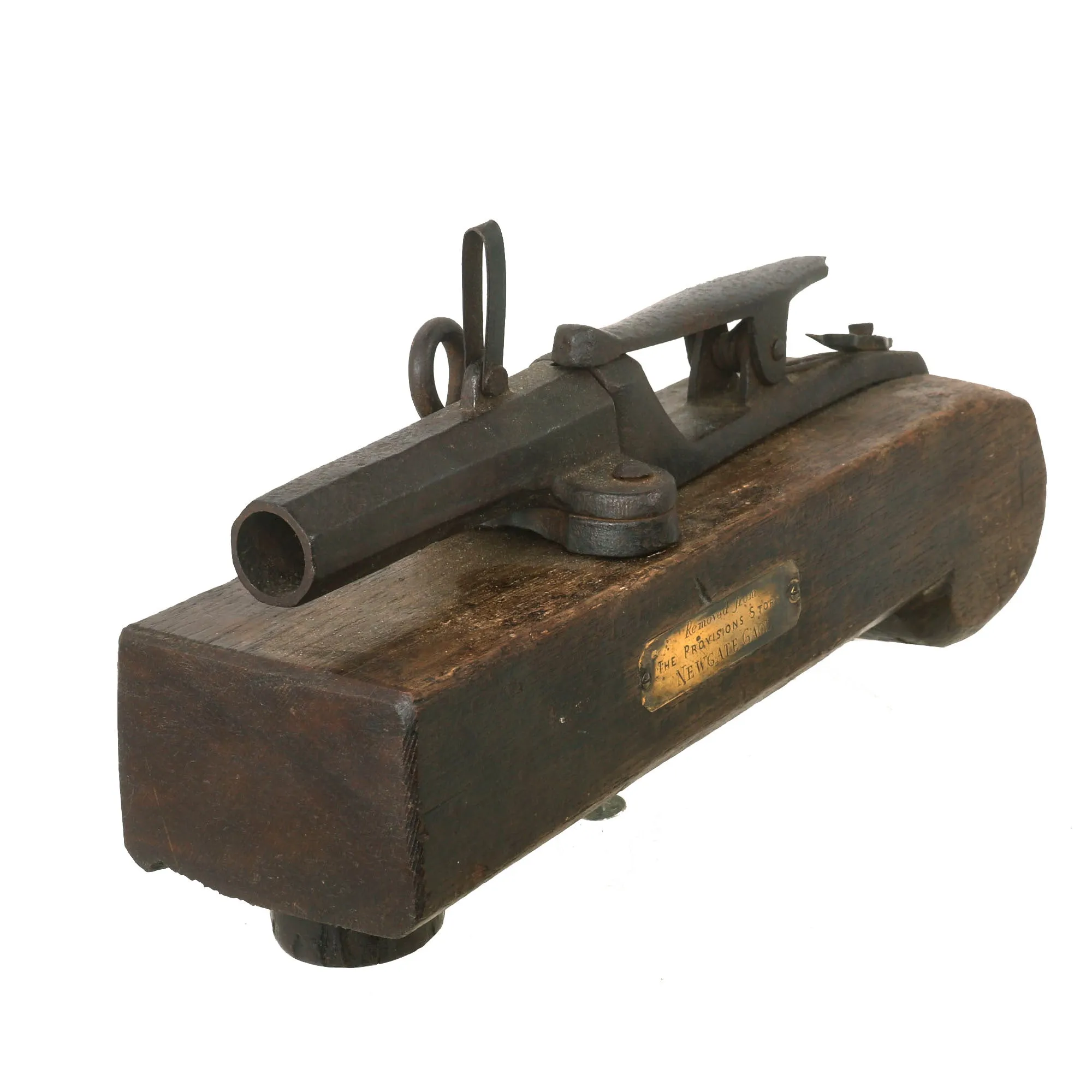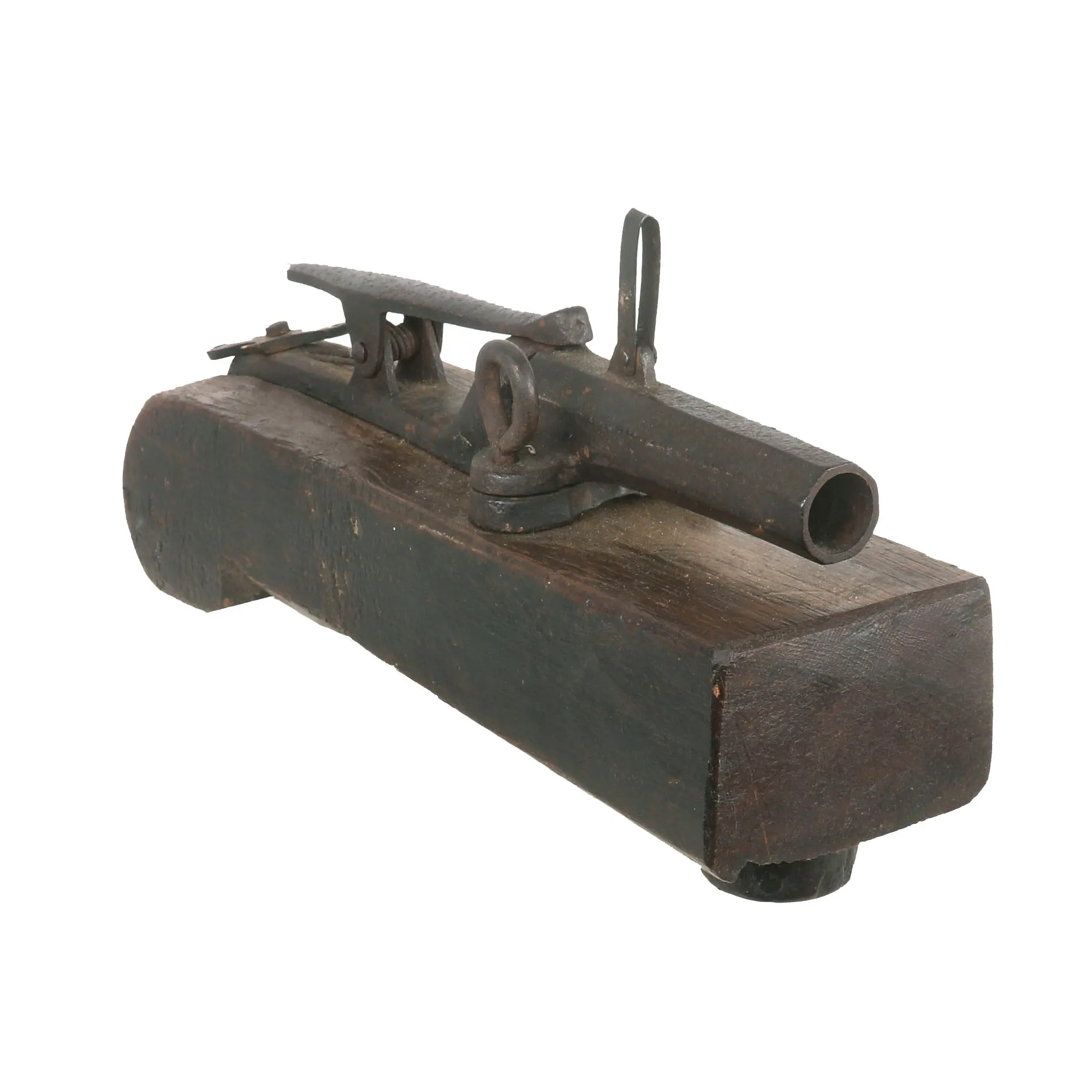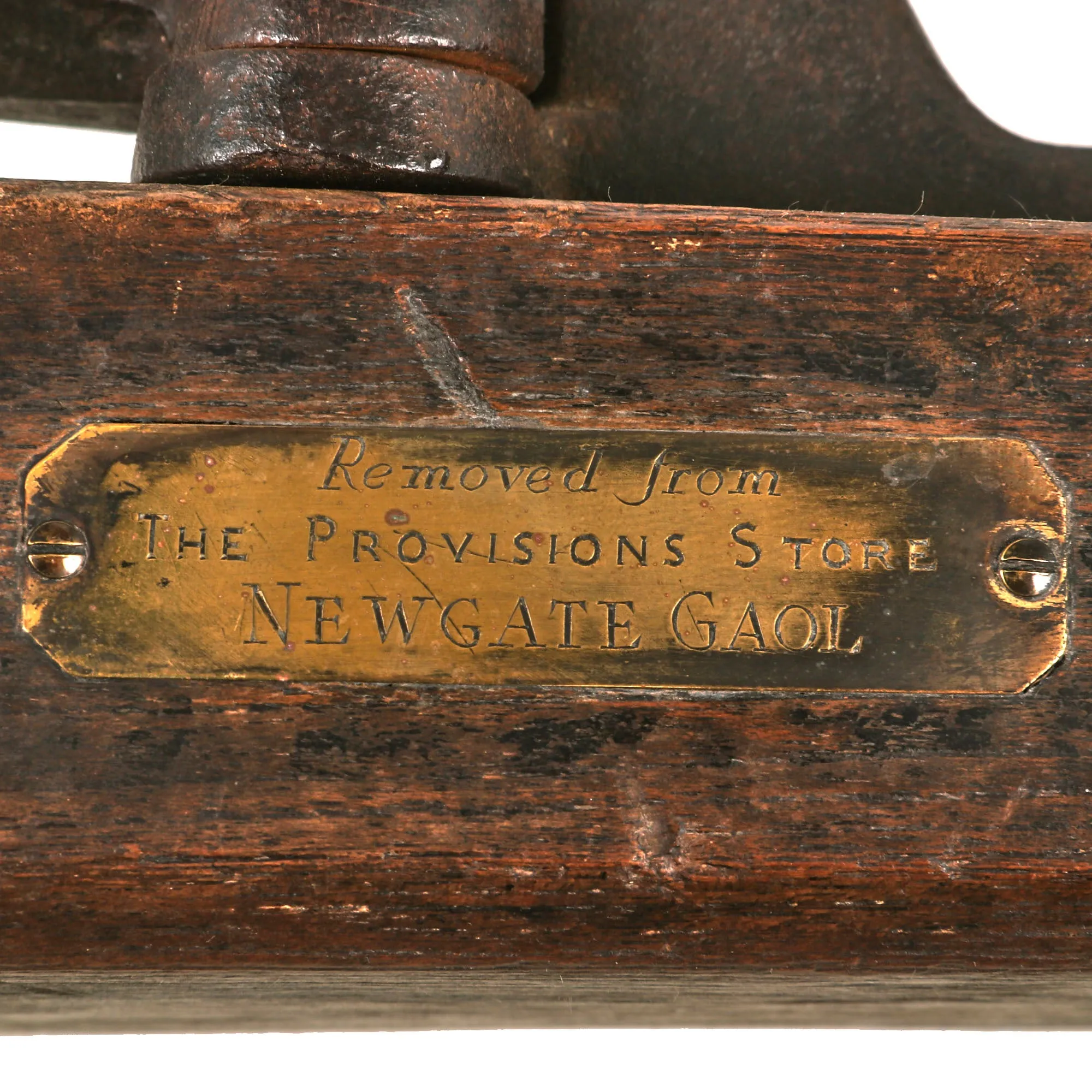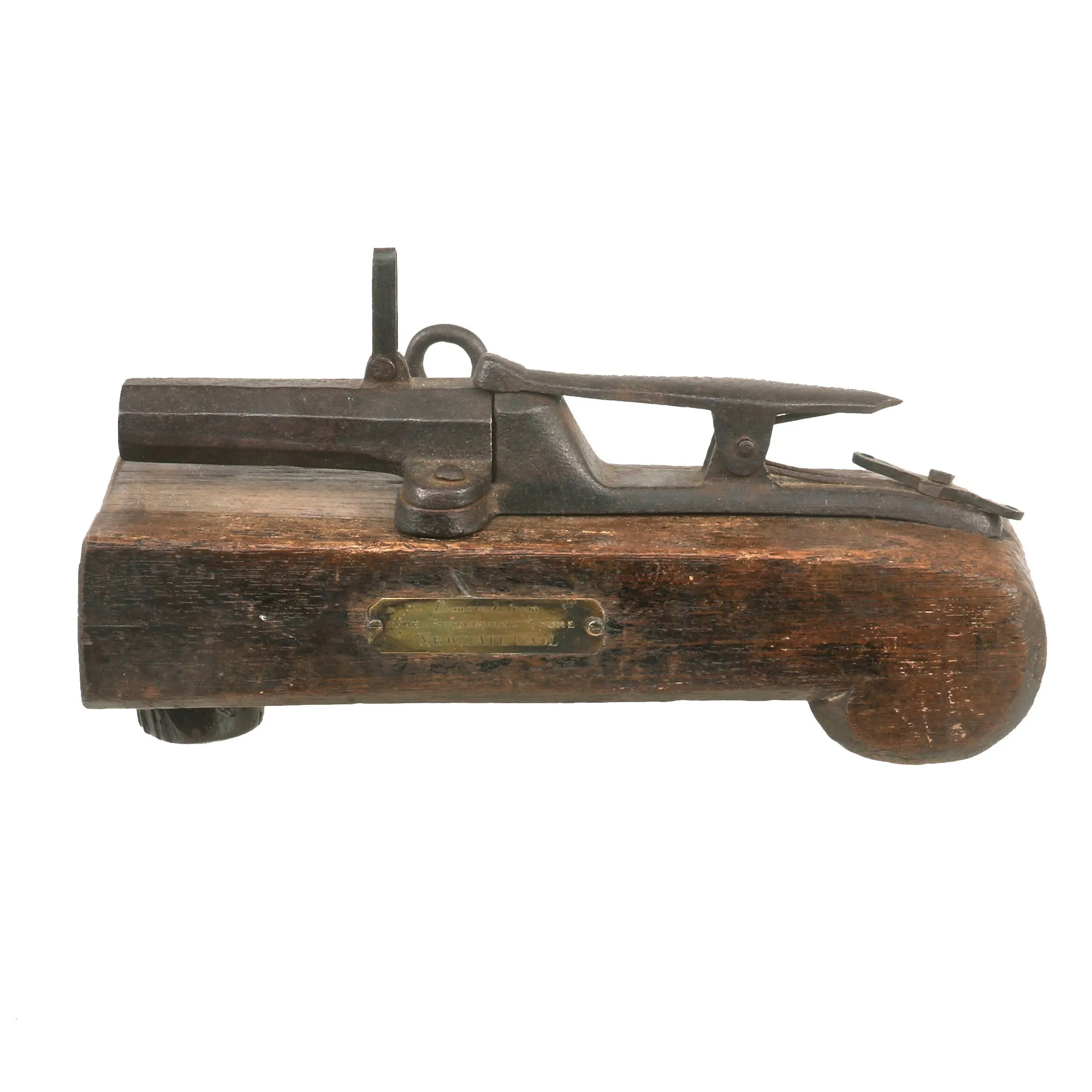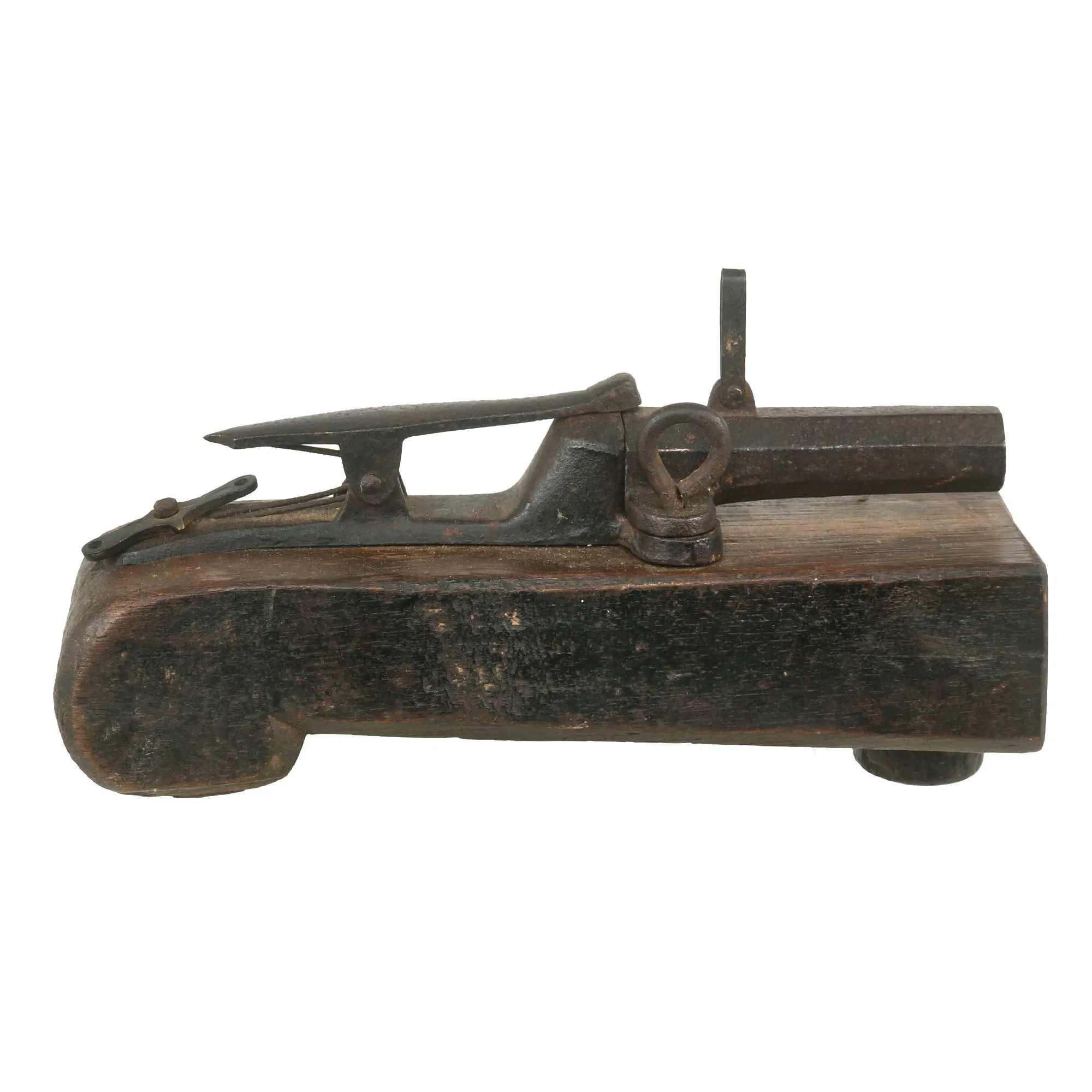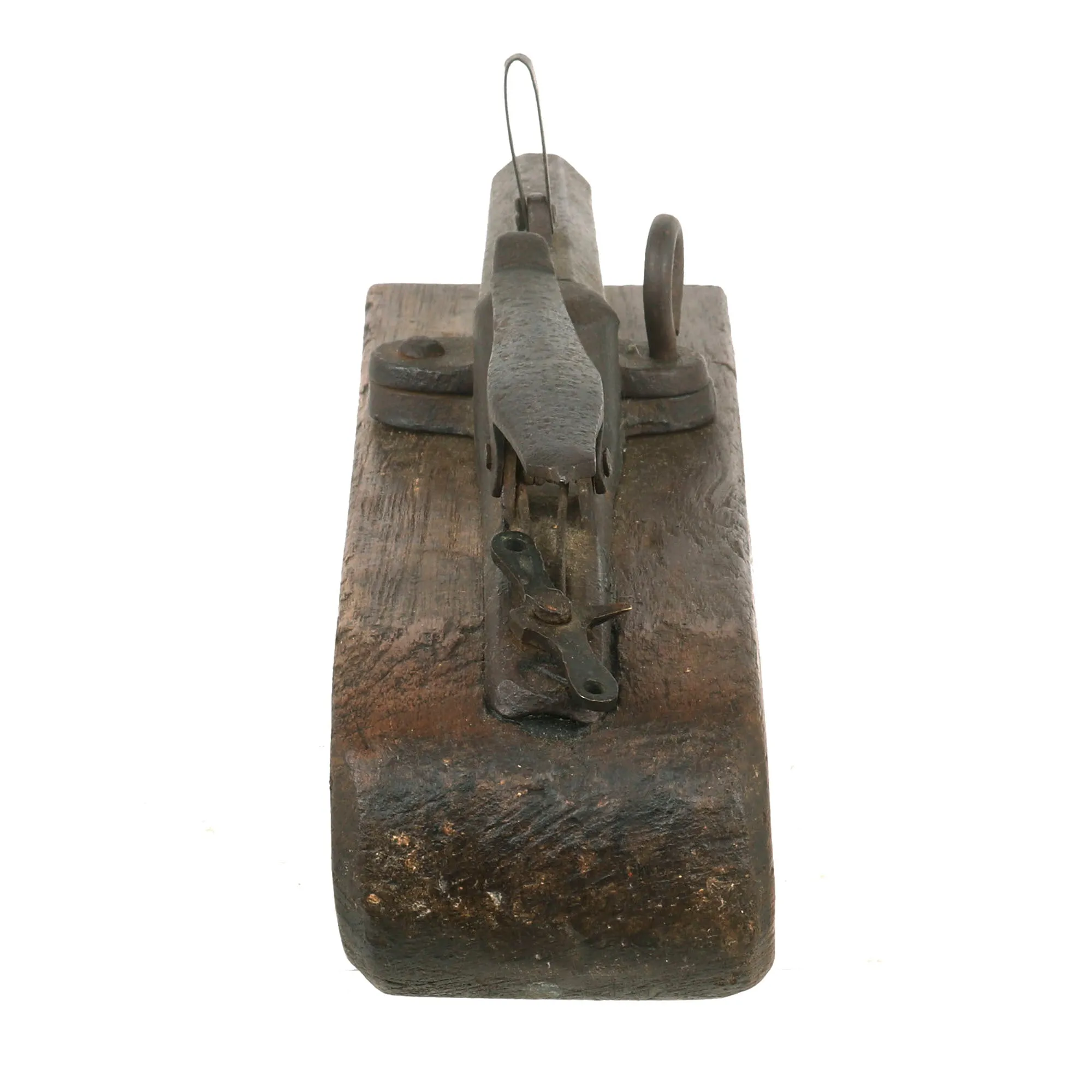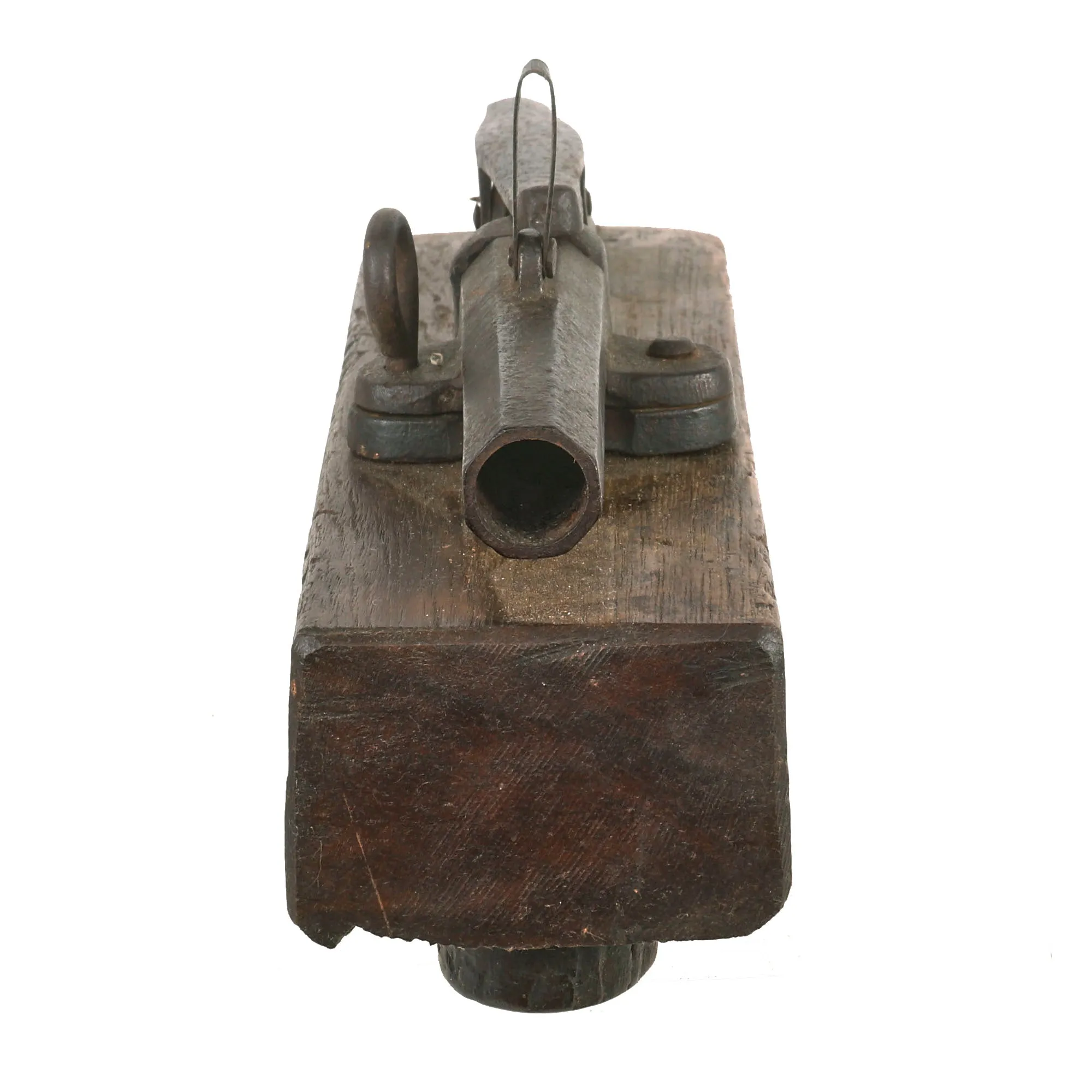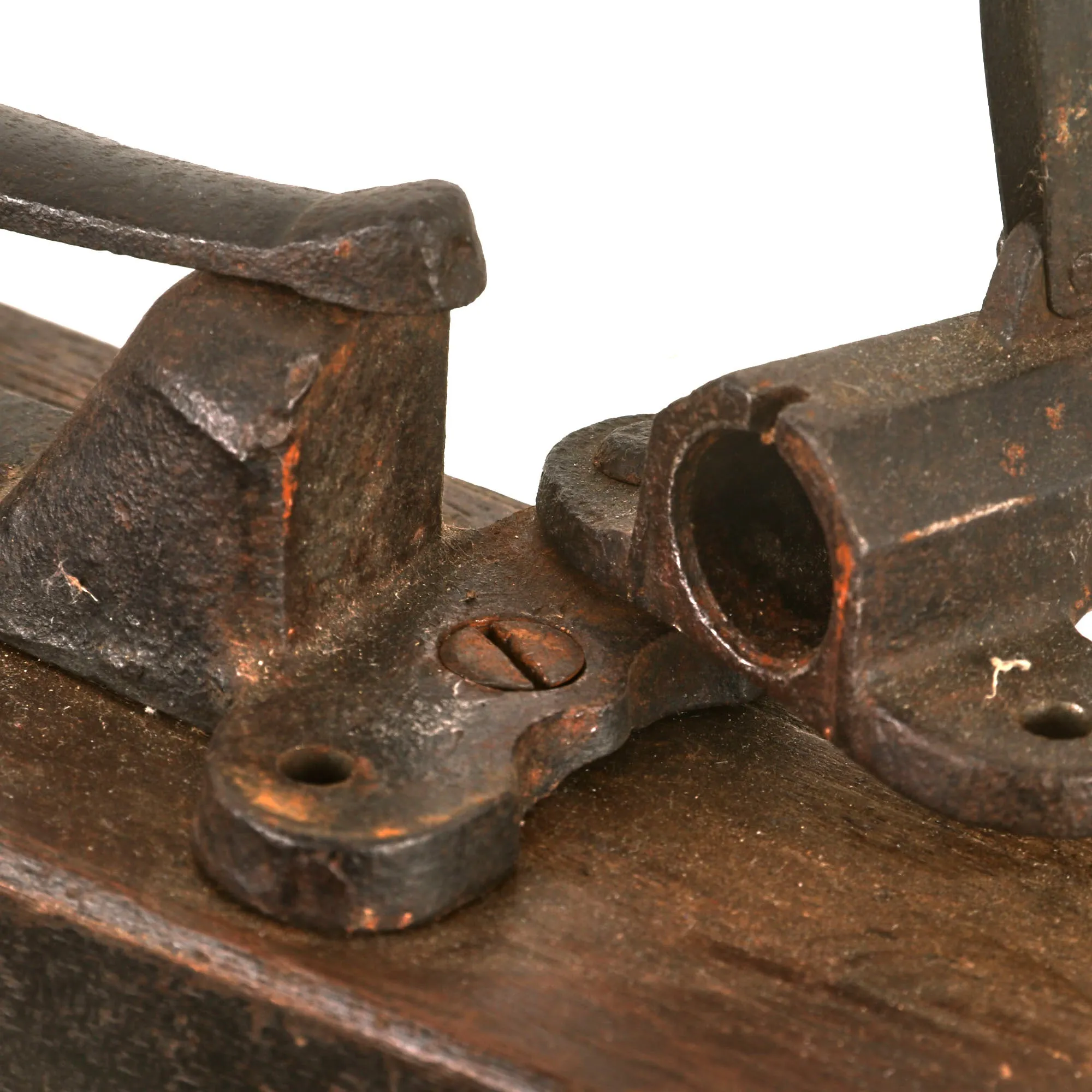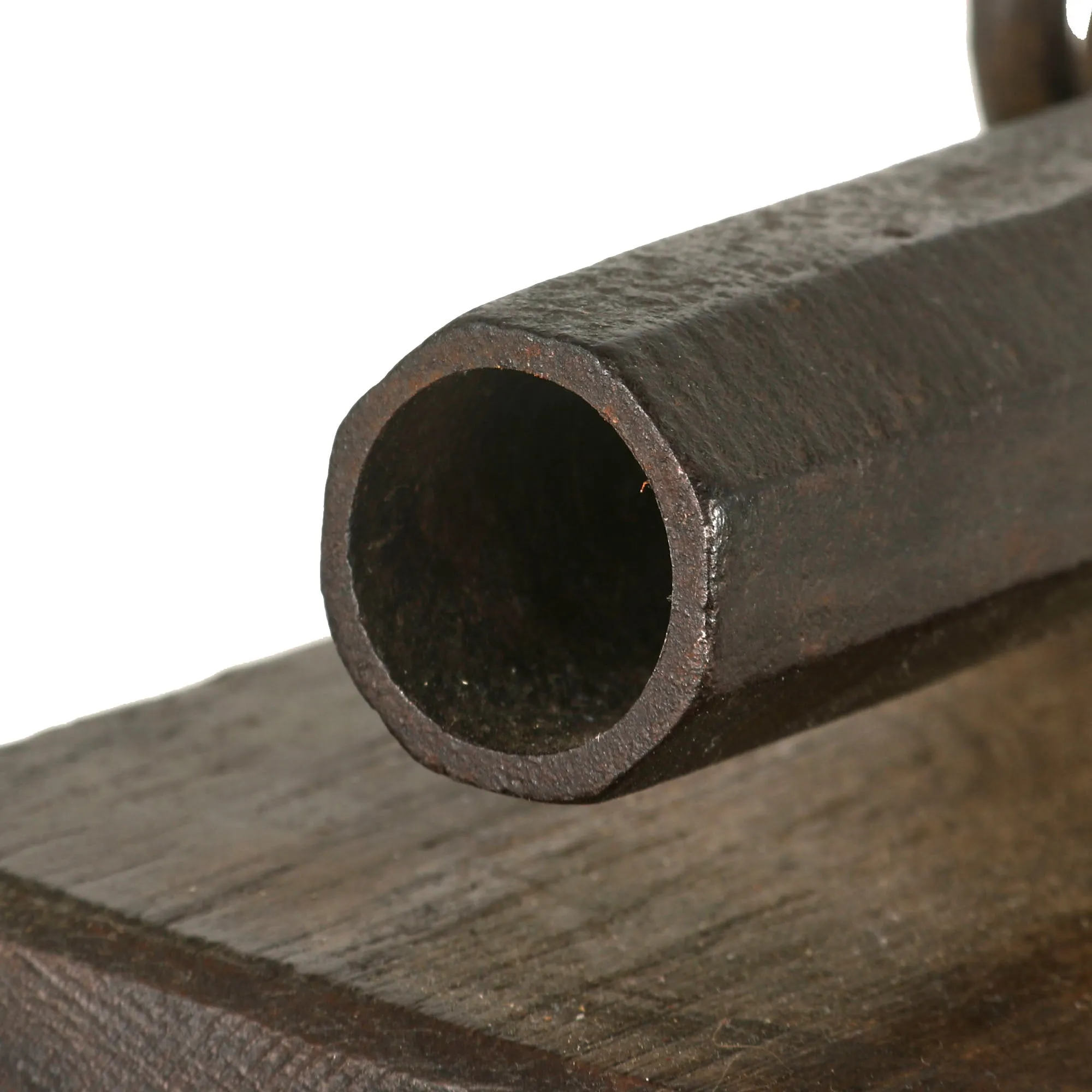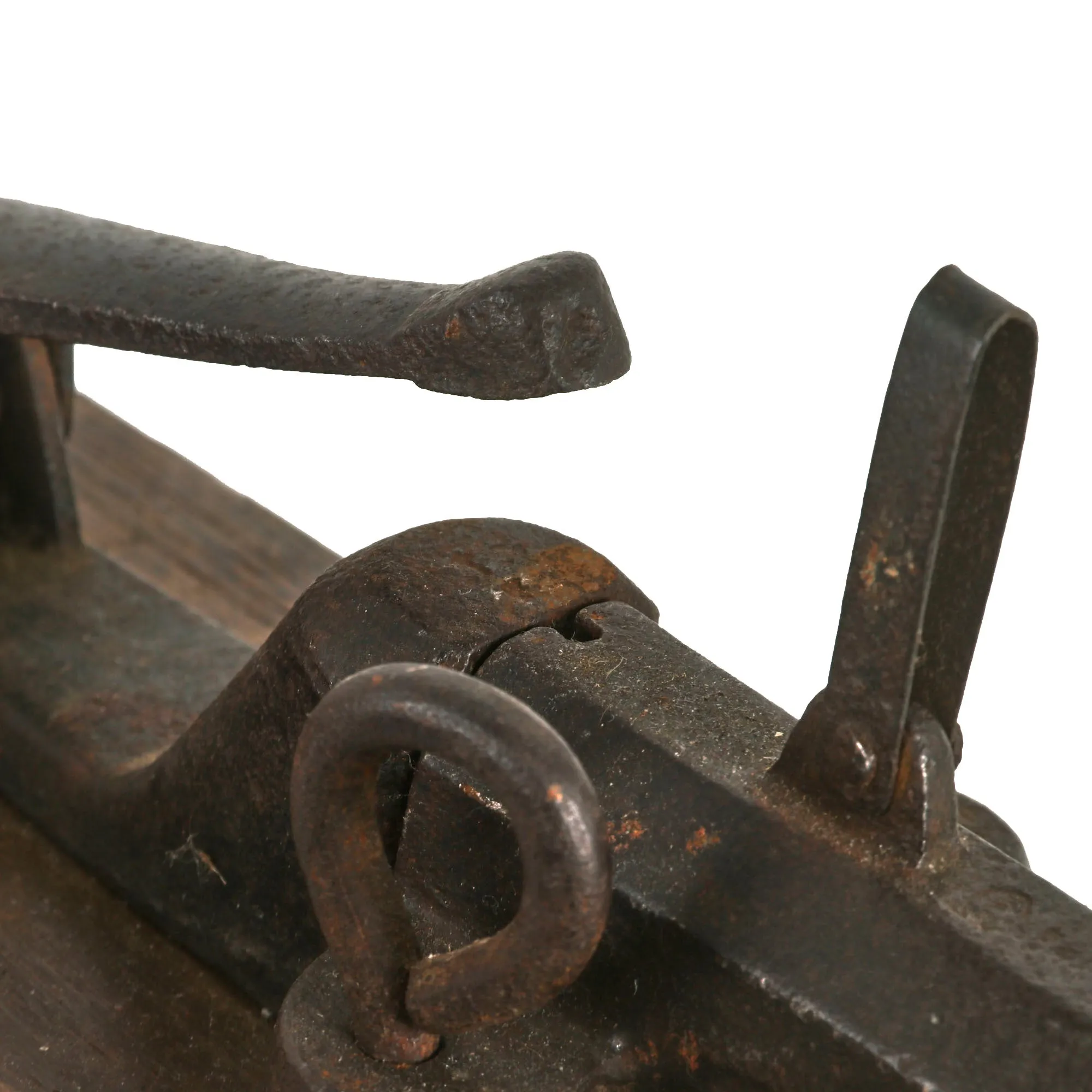Original Item. One-of-a-Kind. The name of Newgate is notorious in the annals of London’s history. Developing out of a collection of cells in the old City Walls to the west (above the ‘New Gate’), it was begun in 1188 during the reign of Henry II to hold prisoners prior to their trial before the Royal Judges. The name passed into infamy as a byword for despair; an oubliette from which the hangman’s rope was often the only way out.
Built in the 12th century and demolished in 1904, the prison was extended and rebuilt many times, and remained in use for over 700 years, from 1188 to 1902. In the late 18th century, executions by hanging were moved here from the Tyburn gallows. These took place on the public street in front of the prison, drawing crowds until 1868, when they were moved into the prison. For much of its history, a succession of criminal courtrooms were attached to the prison, commonly referred to as the "Old Bailey". The present Old Bailey (officially, Central Criminal Court) now occupies much of the site of the prison.
This is a gorgeous piece of history, a door alarm cannon which is meant to be linked to a door or other mechanism, so that if someone tried to enter, the alarm would go off and alert a guard. The gun is loaded via the breech which can be opened by removing the pin to the right side of the barrel. The large hammer is held in the air by the small piece at the end which would be connected via string to the door, releasing the hammer when moved.
There is a small plaque on the piece which reads:
Removed from
The Provisions Store
Newgate Gaol
This was likely used to protect the provisions store from thieves. This piece was almost certainly removed when the prison was being demolished around 1902, and mounted to the wooden base, although given the interesting design of the base, the entire trap gun may have been made like this. The piece measures 11 x 3¼ x 4½” and has a lovely patina from years of storage. There is a small safety on the barrel that would be placed under the hammer.
This is a phenomenal piece of british penal history with a lovely look, ready for further research and display.

 Cart(
Cart(